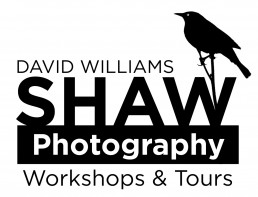I often get the question: What time of year should I visit Alaska? My answer is always the same:
Autumn!

For photographers, no season can compare to fall. The light is beautiful and low angle for hours upon hours. The wildlife is active, as they pack in food for the season. Clear nights are dark enough for the Aurora Borealis to appear. But above all, the tundra has shifted from the monotonous green of late summer to a cacophony of autumn colors.
Like an aurora borealis display, or a sunset, wildlife action, or any number of other natural phenomenon, autumn color is ephemeral; location and timing are everything.
I made this image last year, on the final day of a photo workshop I led to the Brooks Range in early September. We were driving back to Fairbanks and we’d left the dramatic scenery of mountains behind, an hour or two before. But the Dalton Highway is a rolling road, and in the that vast empty space between the Yukon River and the Brooks Range, the road climbs up and down and in and out of forest and tundra.
We were climbing up a low grade just to the north of the tundra clad hills of Finger Mountains when I heard one of my clients in the back seat, gasp and then shout “Stop!” Startled, I slammed on the brakes and pulled over. All heads turned to the left, and there was a collective “wow” from the group. From our perch on the road shoulder, we looked over this display of autumn color.
I’d never seen the like.
It was a horrible place to pull over, so I emptied the vehicle of my clients and their cameras and tripods and drove up the road a little ways to a safe pullout, grabbed my own camera and walked back.
Everything about the scene was dramatic. The colors, of course, but also the line of spruces, the S curve of the creek bottom, the distant rolling mountains, and even the gray and ominous sky. It was one of those rare moments in photography when everything came together.
For an hour my clients made photograph after photograph. And it seemed with every moment they spent, more compositions appeared. Upstream, downstream, right and left cameras pointed and clicked.
I made fewer photos. In fact, as I look through my image collection, in that hour I only made about 6 different compositions. I spent the first 15 minutes, simply looking over the scene, moving back and forth, and stepping down into the soft tundra. I was looking for an image that best tied together the elements I wanted to include: the spruces, the yellow curve of willows, and the patchy yellow and green of the birch forest in the background. Eventually, I settled on this composition, set up my tripod, made this photo.
Landscape photography should not be fast-paced. Often, I see photographers leap out of their vehicles when they reach a location, walk straight over to the first view, set up their cameras, and start photographing. 10 minutes later, they fold up their tripod, turn around, and head back to their cars. Sometimes, they don’t move an inch from their first location.
Look people, you gotta move! Walk around, get low, find an elevated perch, even set the camera aside for a bit and wander around and just look. Unless you do that, your chances of finding the ideal composition are reduced to dumb luck. So, move!
Want to experience this scene and hundreds of others for yourself? I’ll be leading an autumn Brooks Range 30 August – 3 September, 2020, and a couple of spots are still available! This is your chance to experience the best of fall in the arctic: autumn landscapes, aurora borealis, dramatic mountains, and a good chances for wildlife, all at a screaming deal of a price! (How’s that for a sales pitch?) Find out more and sign up HERE.

You must be logged in to post a comment.